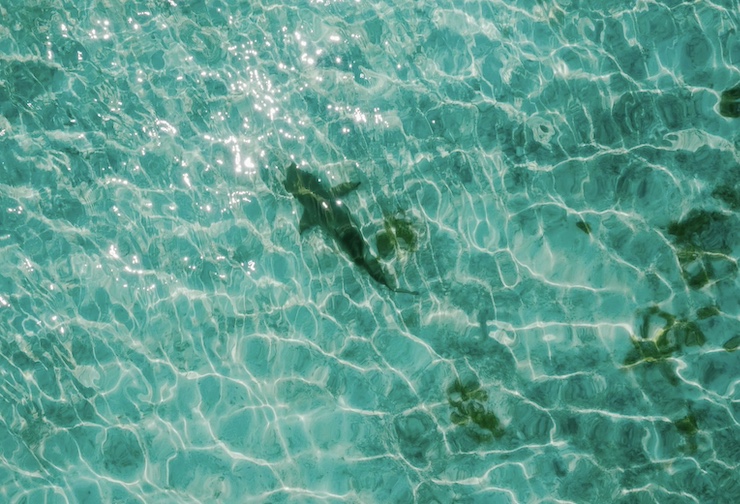Professors at the University of California Are Using Drones to Study Sharks

Professor of Ecology, Evolution, and Marine Biology Douglas McCauley from the University of California, Santa Barbara, is hoping to change the way the world understands the ocean. Professor McCauley operates the McCauley Lab within the UC Santa Barbara Benioff Ocean Science Laboratory, where he and his students study the relationships between oceanic and human communities, such as sharks coexisting with swimmers and surfers. As explained in Professor McCauley’s university bio, “Research in the lab is directed at understanding how community structure influences ecosystem dynamics, in determining how ecosystems are interactively and energetically coupled to one another, and quantifying how humans perturb these dynamics and shape patterns of biodiversity.” Professor McCauley and his students explore these topics using a range of traditional methods, like ecological modeling, along with non-traditional tools, like drones for spatial analysis.
Professor McCauley and some of his research students recently published their findings on using drones to monitor shark behavior at Padaro Beach in Carpinteria, CA where shark sightings have increased over the last decade. After a two-year study deploying drones, Professor McCauley now has insights into what is driving this biodiversity increase. The drones were flown regularly through a program called Sharkeye to gather data on the time of year, time of day, and what specific regions of the beach sharks were frequently gathering in.
“White shark density, as measured via UAV, was highly variable across time of day and day of year, with modest variation across years,” the abstract of the paper states. “Typically, more sharks were observed in the late afternoon hours. Sharks, especially those <3 m total length, were observed more often during periods of colder seafloor temperatures, potentially reflecting avoidance of these colder, deeper waters by more cold-intolerant smaller white sharks.” The findings pointed to the sharks preferring the warmer, shallower areas of water, the same areas where people go to enjoy a day at the beach.
Though the drone data showed an increase in shark sightings around ecosystems frequented by people, Professor McCauley points out that a physical interaction between a human and a shark is still a rarity. Programs like drones operated through Sharkeye help keep these interactions rare. As co-author on the project Neil Nathan explains, the team began using the data collected by the drones as a shark warning system as well. After people on the beach started showing a great deal of interest in the drones being used to study the sharks, Professor McCauley had a text line set up to go along with the collected data.
Neil said about 80 people, including lifeguards, surf instructors, and local residents, signed up to automatically receive texts that would connect them to the data being collected by the drone. “We think data is empowering and helps us make safer, smarter decisions,” Neil said. “Our goal in this program is to provide data that helps people fall more in love with the ocean. It helps them understand it better and feel and be safer, even though the probability of an incident with a shark is exceptionally low.” Professor McCauley went on to say, “Right now, co-existence is largely going well, as people at these beaches seem to have much more interest in the sharks than vice versa.”
To gather such data previously, scientists would have to rely on observations made from a boat, from a diver in the water, or from a plane. “One of the strengths of this method is that you can cover a lot of ground in these surveys, and because the sharks have no idea there is a drone overhead, they are easier to count,” Neil stated. “A disadvantage is that you can really only image the surface layer of the ocean.”
To accommodate for this, Neil explained that they supplemented the drone data with data collected by acoustic buoys and tagging programs that have been in place for several years thanks to a long-running research program led by Professor Chris Lowe’s Shark Lab at California State University, Long Beach. These types of research projects highlight the importance of preserving biodiversity in our oceans and empowers communities to engage with and appreciate the natural world around them. As we continue to explore the depths of our seas, efforts like these remind us that with the right tools and insights, we can foster a safer and more harmonious relationship with the creatures that share our waters.
|